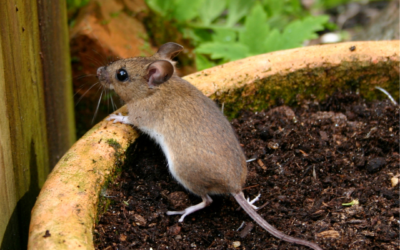Step into the diverse landscapes of Texas, where wildlife thrives amidst the beauty that spans from the Gulf Coast to the Panhandle. Today, we embark on an intriguing exploration of the large and formidable rodents that make the Lone Star State their home. Discover Texas’ diverse rodent population, and learn about their habits and the challenges they bring to human homes.
Nutria–The Wetland Wanderer
Nutrias, known for their distinctive orange incisors, frequently inhabit the wetlands of Texas. These semi-aquatic rodents are skilled swimmers, making them right at home in ponds, rivers, and marshes.
Nutrias thrive in the coastal regions of Texas, particularly along the Gulf Coast. Their adaptability to aquatic environments makes them a common sight in wetland areas. While nutrias are generally harmless, their burrowing habits can lead to erosion and damage to levees and water infrastructure. Vigilance is key to preventing potential issues.
Beaver–Master Builder of Texas Streams
Beavers are renowned for their exceptional building skills, creating intricate dams and lodges. In Texas, beavers are often found along streams and rivers where they build impressive structures using branches and mud.
Beavers distribute themselves across Texas, favoring areas with accessible water sources. They contribute to shaping ecosystems by creating wetlands that benefit various plant and animal species. While beavers generally avoid human interaction, their dam-building activities can lead to flooding and property damage. Proper management is essential to coexist harmoniously.
Pack Rat–Texas’ Desert Dweller
Desert pack rats, also known as woodrats, are experts in collecting and hoarding various objects. They often build their nests from sticks, plant material, and debris in rocky areas or abandoned structures.
Pack rats are widespread in the arid regions of Texas, particularly in West Texas and the Hill Country. They are well-adapted to the challenges of the desert environment. While pack rats may not pose direct threats to humans, their nesting activities can lead to damage in and around structures. Prevention and removal measures can help address potential issues.
Conclusion
Texas is home to a diverse array of sizable rodents, each with its unique habits and ecological role. Understanding the behavior and distribution of these furry neighbors is crucial for maintaining a harmonious coexistence. We can enjoy the wildlife in Texas and reduce any dangers they may pose to people living nearby by taking action.




